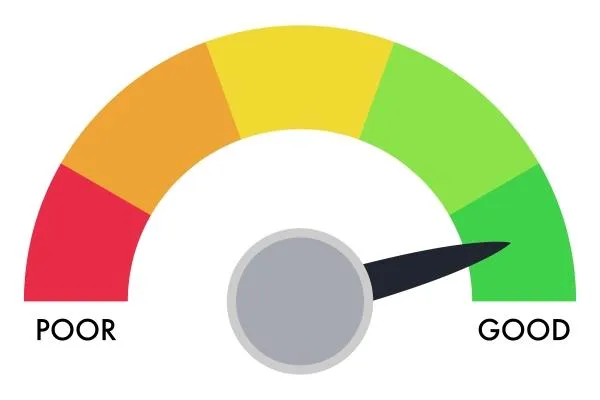
Getting the Best From Your Leaders: Assessing Strengths and Weaknesses
Getting the Best From Your Leaders: Assessing Strengths and Weaknesses
Have you ever seen a professional athlete struggle on one team and turn into a star on another, and wondered what the difference is? At the end of the day, winning coaches consistently do one thing better than their contemporaries: they know how to put their players in the best possible position to succeed. While you see this often in sports, you don't see this approach from most leaders in business. Instead, you see them trying to make every team member fit an approach or style that doesn't fit them, which usually leads to failure.
What the best leaders know is that to get the best from their team, they need to know and understand their strengths and weaknesses. You can't put people in the best position to thrive if you don't know how they can contribute to the overall success of the team. Why doesn't leadership do this more often?
Are we too egotistical and want our employees to conform to us? Are we in too much of a rush to get the employee straight to work? Do you not feel the need to connect with your team? Whatever the reason may be, tapping into what author Liz Wiseman calls the 'Native Genius' of employees allows you to use the best that employees have to offer. In addition, think about yourself for a second.
Do you enjoy doing things that you are terrible at or excel at? Employees are the same. Yet leaders consistently have employees do what they are poor at and then wonder why the results are not any good. The most recent employee data by Gallup consistently demonstrates that employee engagement and productivity are very low across the U.S. Perhaps if companies focused on the strengths and weaknesses of their leadership team and employees, this wouldn't be the issue that it is today.
Why Leaders Need to be Assessed
Leadership isn't just about steering the ship; it's about understanding the nuances of individual leadership styles and leveraging them to propel the entire team forward. This is where leadership assessment steps in as a game-changer. Let's delve into why assessing leadership is not just beneficial but essential for fostering growth and success within any organization.
Here are just a few benefits of leadership assessment:
Effective Leadership Development:
Understanding a leader's strengths allows a company to leverage these assets more strategically, enhancing overall performance and driving success. By tapping into these strengths, organizations can align leadership capabilities with corporate objectives, maximizing efficiency and effectiveness. Meanwhile, recognizing their weaknesses is not a sign of failure but an essential step for targeted professional development. By focusing on these weaknesses, leaders can develop a more well-rounded skill set, contributing to personal growth and, ultimately, the organization's resilience and adaptability.
Succession Planning:
By evaluating the capabilities and performance of current leaders, companies can better plan for the future. This includes identifying potential candidates for succession and preparing them in advance to ensure smooth transitions in leadership roles.
Team Composition and Dynamics:
Understanding the varied strengths and weaknesses of leadership styles can play a crucial role in assembling highly effective management teams. By recognizing these differences, companies can strategically position leaders to ensure that the team is well-balanced, with each member's skills and abilities complementing those of their colleagues. This approach not only enhances the team's overall performance but also fosters a more collaborative and productive working environment, where diverse talents are leveraged to achieve common goals.
Strategic Alignment:
Leaders must not only embody the company's strategic vision but also actively promote it within and outside the organization. By conducting thorough assessments of their strengths and weaknesses, leaders can ensure that they are fully aligned with the company's overarching goals. This alignment is crucial for leaders to effectively drive the vision forward. Moreover, understanding their own capabilities allows leaders to leverage their strengths and address any weaknesses, thus ensuring they are well-equipped to motivate their teams, overcome challenges, and achieve long-term success in realizing the company's strategic objectives.
Improved Decision-Making:
Leadership assessment acts as a compass, guiding organizations toward sound decision-making. By evaluating leadership styles, businesses gain insights into the strengths and weaknesses of their leaders. Armed with this knowledge, they can allocate responsibilities more effectively, capitalize on each leader's strengths, and mitigate potential risks. This proactive approach to decision-making ensures that strategies are well-informed and aligned with organizational goals.
Stronger Teams:
Leadership assessments can help you identify areas where you can improve communication, delegation, and motivation, all of which contribute to building a strong and engaged team. Understanding different leadership styles enables organizations to build diverse and complementary teams. By harnessing the unique strengths of each leader, teams become more resilient, adaptable, and capable of overcoming challenges together.
Positive Work Environment:
When leaders are self-aware and working to improve their skills, it creates a more positive and productive work environment for everyone. Leadership sets the tone for organizational culture. Assessing leadership enables businesses to cultivate a positive work environment where employees feel valued, motivated, and empowered. Leaders who are aware of their strengths and limitations can nurture trust, foster open communication, and inspire their teams to reach new heights. This not only boosts morale and employee satisfaction but also reduces turnover rates and enhances overall productivity.
Mastering Leadership: Key Qualities

Being in a leadership position requires a robust set of qualities that goes beyond merely holding a position of authority—it's about driving success, fostering growth, and inspiring teams to reach their full potential. Let's explore three key areas essential for cultivating effective leadership styles: communication, strategic thinking, and problem-solving.
Strategic Thinking:
An effective team leader can see the big picture and develop plans to achieve long-term goals. This involves the ability to envision the big picture, anticipate future trends, and devise innovative strategies to navigate complex challenges. Leaders who excel in strategic thinking can steer their organizations toward success by making informed decisions, seizing opportunities, and staying ahead of the competition. By fostering a culture of strategic thinking, leaders empower their teams to embrace change, adapt to evolving landscapes, and achieve long-term objectives with clarity and purpose.
Communication:
A leader's ability to clearly communicate their vision and motivate others is essential for building strong teams. This includes active listening, providing constructive feedback, and tailoring your message to your audience. Leaders who master this skill inspire trust among team members and foster a culture of transparency and collaboration. Whether it's delivering feedback, aligning goals, or navigating challenges, strong communicators can bridge gaps, resolve conflicts, and ensure that everyone is on the same page. By honing their communication skills, leaders can cultivate an environment where ideas flow freely, morale soars, and productivity flourishes.
Problem-Solving:
In the face of adversity, effective leaders rise to the occasion as adept problem-solvers. They possess the analytical skills, creativity, and resilience to tackle obstacles head-on and turn setbacks into opportunities for growth. Whether it's troubleshooting operational issues, resolving conflicts, or overcoming market challenges, leaders who excel in problem-solving inspire confidence, instill a sense of resilience, and drive continuous improvement within their teams.
Assessing leadership skills

Becoming a great leader is not an instantaneous process. It is a journey that involves effective leadership development, which is deeply rooted in self-awareness, and a genuine willingness to learn and grow. This journey is continuous and requires dedication and commitment. Fortunately, for those willing to embark on this journey, there are numerous assessment methods available. These tools can provide invaluable insights into your strengths and areas that need improvement, guiding you on your path to becoming a more effective leader.
Here are four key methods for leadership assessment:
Performance Reviews:
Regular performance reviews offer an opportunity to assess leadership effectiveness against predefined goals and objectives. By evaluating key performance indicators, such as team morale, employee engagement, and business results, organizations can measure the impact of leadership on organizational success. Performance reviews also facilitate ongoing dialogue between leaders and their supervisors, enabling continuous improvement and development.
360-Degree Feedback:
This comprehensive approach gathers feedback from superiors, colleagues, direct reports, and even clients, providing a well-rounded picture of your leadership effectiveness. 360-degree feedback can be particularly helpful in identifying blind spots in your leadership style. By collecting feedback from various stakeholders, organizations gain valuable insights into how leaders are perceived and the impact of their actions on different aspects of the business.
Psychometric Assessments:
Psychometric assessments, such as personality tests and leadership style inventories, provide quantitative data on an individual's traits, preferences, and behavioral tendencies. These assessments help identify leadership styles, strengths, and areas for development. By leveraging scientifically validated tools, such as the DiSC, Myers-Brigg, or The Predictive Index, organizations can make more objective decisions when selecting, developing, and coaching leaders.
Self-Assessments:
Honest self-reflection is a crucial part of leadership development. Taking a self-assessment can help you identify areas where you excel and areas where you might need improvement.
By utilizing a combination of these assessment methods, you can gain valuable insights that will empower you to become a more effective leader. Remember, leadership is a journey, not a destination. Embrace continuous learning and development, and you'll be well on your way to achieving your leadership goals.
Leadership styles
Great leadership is a key ingredient in any successful company. But there's no one-size-fits-all approach. The most effective leader will adapt their style to the specific needs of their team and the overall company culture. While there are many different styles of leadership, from democratic leadership to coaching leadership, what is important to understand is the qualities of the leaders when enacting the style.
Here's a breakdown of some common leadership styles and how they can impact company success:
Authoritative Leadership style
In this style, the leader makes decisions without seeking input from others. They have full control over the team and often dictate tasks and procedures. While this style can be efficient in certain situations, it may lead to low morale and limited creativity among team members. This style can be effective in crisis situations or when clear direction is needed. However, it can also stifle creativity and lead to employee disengagement in the long run.
Democratic Leadership style:
A democratic leader involves team members in the decision-making process. They value input from others, encourage collaboration, and foster a sense of ownership among team members. Democratic leadership style promotes employee engagement and innovation but can be time-consuming in decision-making. This approach can lead to higher employee engagement and ownership of projects. However, it can also slow down decision-making.
Transformational Leadership style:
Transformational leaders inspire and motivate their team through a compelling vision and charismatic personality. They empower their followers, encourage creativity, and promote a sense of purpose. An individual who practices a transformational leadership style often foster a positive organizational culture and drives significant change and growth. They excel at fostering creativity and innovation, leading to a culture of continuous improvement. This style can be particularly effective in dynamic environments where companies need to adapt quickly
Pacesetter Leadership style:
Pacesetting leadership is a style where the leader sets high standards and expects the team to meet them. They lead by example, working hard and showing what they expect.
This can be effective with skilled, self-motivated teams who thrive on clear goals. However, it can backfire if the team feels pressured or lacks the skills to meet the high expectations. In addition, it can stifle creativity, damage morale, and lead to burnout.
Servant Leadership style:
Servant leaders prioritize the needs of their team members above their own. They focus on serving others, fostering a supportive environment, and enabling the personal and professional growth of their team. Servant leaders empower their followers and promote a culture of trust and collaboration.
Laissez-Faire Leadership style:
Laissez-faire leaders adopt a hands-off approach and delegate decision-making authority to their team members. They provide minimal guidance and support, allowing individuals to take ownership of their tasks and projects. While this style can promote autonomy and creativity, it may lead to confusion or lack of direction without proper oversight.
The Most Effective Leadership Style
There's no single "best" leadership style. The most successful companies often have leaders who can adapt their approach based on the situation.
Here are some tips for leaders:
Know Yourself: Understanding your strengths and weaknesses as a leader is crucial for self-awareness.
Know Your Team: Tailoring your approach to your team's needs and personalities will lead to greater effectiveness.
Be Flexible: Great leaders can adapt their communication style and decision-making processes to different situations.
By understanding different leadership styles and fostering a culture of open communication, companies can empower their leaders to achieve long-term success.
Turning insights into action:
Developing personalized growth strategies for leaders, based on the insights gained from assessment results, entails a strategic and collaborative process. This approach ensures that the development plans are tailor-made to address individual strengths and areas for improvement, fostering a more impactful and effective leadership growth journey.
Review assessment data:
Start by thoroughly reviewing the assessment results, including performance reviews, psychometric assessments, 360-degree feedback, and self-assessment data. Look for patterns, trends, and areas of strength and improvement across various dimensions of leadership effectiveness.Identify development needs:
Use the assessment data to identify specific development needs and areas for improvement. Look for gaps between current competencies and desired leadership skills, as well as any potential blind spots or developmental areas that may require attention.Set clear objectives:
Based on the identified development needs, establish clear and measurable objectives for the leader's development plan. These objectives should be aligned with the organization's strategic goals and the leader's professional aspirations.Tailor development activities:
Select development activities that are tailored to address the leader's specific needs and objectives. This may include targeted training programs, coaching sessions, mentoring relationships, job rotations, or stretch assignments designed to build relevant skills and capabilities.Provide feedback and support:
Offer ongoing feedback and support to the leader throughout their development journey. Encourage open dialogue, reflection, and self-awareness to facilitate growth and learning. Provide constructive feedback based on assessment results, and offer resources, guidance, and mentorship to help the leader achieve their development goals.Monitor progress and adjust as needed:
Continuously monitor the leader's progress against their development plan and adjust as needed based on feedback and changing priorities. Regular check-ins, performance reviews, and reassessments of skills and competencies can help ensure that the development plan remains relevant and effective over time.Celebrate success and recognize growth:
Celebrate milestones and achievements along the way to acknowledge the leader's progress and growth. Recognize their efforts and accomplishments, and reinforce a culture of continuous learning and development within the organization.
A thriving company culture doesn't happen by accident. It requires constant attention and investment, and leadership development is a key part of that equation. By continuously assessing and developing your leaders, you empower them to shape a positive and productive work environment. Remember, strong leadership is the cornerstone of a strong culture, and ongoing investment in leadership development yields benefits for the entire organization. So don't wait – start building your leadership pipeline today and watch your company culture flourish.
At the heart of every successful organization is a team of well-developed leaders, empowered to foster a positive and productive environment. Don’t let another day pass without taking action. Schedule a strategy call with Dan Neissany today!